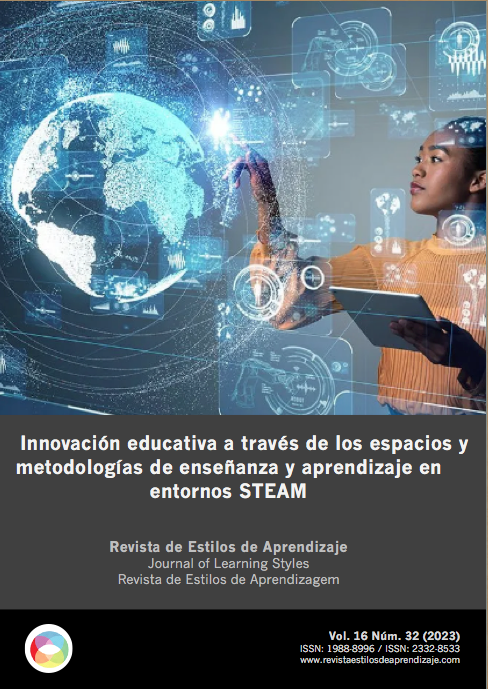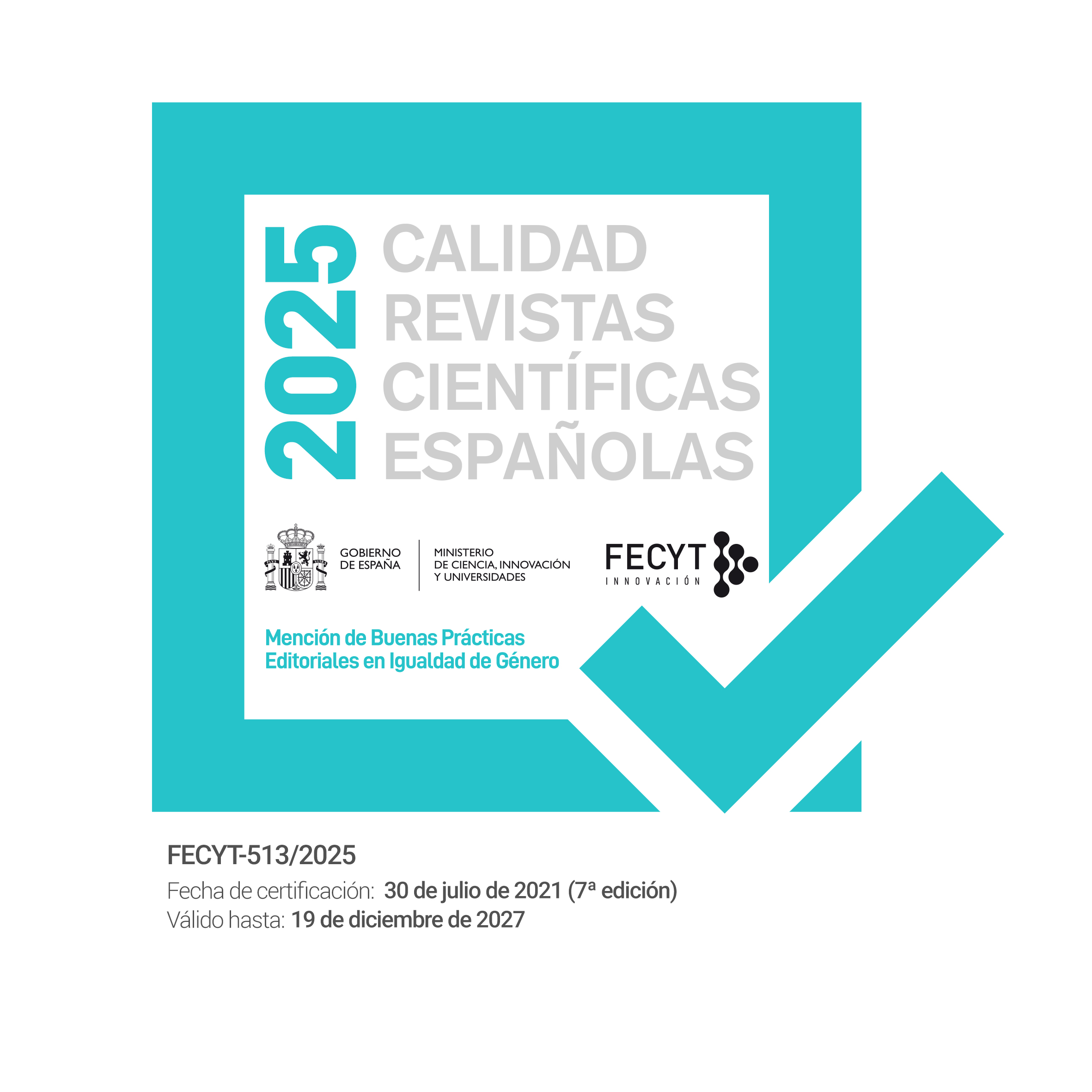Educational spaces to promote sustainability and school safety management. A study between Mexico and Canada
DOI:
https://doi.org/10.55777/rea.v15iEspecial.4641Keywords:
School Safety, Teaching Strategies, Sustainibility, M´éxico, CanadáAbstract
This article analyses the educational spaces that have contributed to promoting sustainability and school safety in two educational institutions, one in Mexico and the other in Canada. Using a qualitative methodology, we worked with educational agents from both schools to identify contextual problems, the systematised approach of their probable solutions, as well as the search for and organised application of the information, which was obtained from a diagnosis in which these spaces are highlighted as conducive to the exchange of awareness and ideas that impact society and the way in which knowledge, knowledge and actions are learned and reproduced. The results of this study showed the link between the development of teaching strategies with school safety and sustainability, which generated environments conducive to student learning, both in and out of school.
Downloads
References
Abad, J. (2010). 7 ideas clave: Escuelas sostenibles en convivencia. Grao. https://tinyurl.com/2pbw9e9y
Alavedra, P., Domínguez, J., Gonzalo, E., & Serra, J. (1997). La construcción sostenible: el estado de la cuestión. Informes de La Construcción, 49(451), 41–47.https://doi.org/10.3989/ic.1997.v49.i451.936
Bénard Calva, S. M. (Selección de textos). (2019). Autoetnografía. Una metodología cualitativa. Universidad Autónoma de Aguascalientes; El Colegio de San Luis A.C. https://tinyurl.com/yjrks84h
Canales, M. & Peinado, A. (1999). Grupos de Discusión, en Delgado, J.M. y Gutiérrez, J. Métodos y técnicas cualitativas de investigación en Ciencias Sociales. Síntesis
CITILAB. (2017, May 27). Laboratorio ciudadano - CITILAB. https://www.citilab.eu/es/laboratorio-ciudadano/
Frias, G. & Montes, L. (Coord.). (2019). Arar, sembrar y cosechar: planteles educativos sustentables. UAEM, SSHRC. http://investigacion.uaem.mx/archivos/epub/arar-sembrar-cosechar/arar-sembrar-cosechar.pdf
Geertz, C. (2001). La interpretación de las culturas (Vol. 1). Barcelona: Gedisa
Global Alliance for Disaster Risk Reduction & Resilience in the Education Sector [GADRRRES]. (2017). Marco Integral de Seguridad Escolar. http://gadrrres.net/resources/comprehensive-school-safety-framework
Gómez, G. (2011). Dónde habita la violencia: violencia doméstica y arquitectura. Universidad de Colima, Red de Investigación Urbana A. C. https://tinyurl.com/ymhcwmk4
González, G., Caballero, J., & Chávez, M. (2011). Las metáforas de la influenza humana A (H1N1) en México: el escenario nacional al descubierto. Una aproximación a través de la prensa mexicana. Comunicación y Sociedad, (16),105-132. http://www.scielo.org.mx/scielo.php?script=sci_arttext&pid=S0188-252X2011000200005
González, M., & Abad, E. (2020). Diseño del espacio educativo universitario y su impacto en el proceso académico: análisis de tendencias. Revista de Estilos de Aprendizaje, 13(25), 1-13. https://revistaestilosdeaprendizaje.com/article/view/1512
González, V. R. (2008). Seguridad escolar. Inventio. 4(8), 31-38. http://inventio.uaem.mx/index.php/inventio/article/view/495
González, V. R. (2010). El taller de Foucault. Universidad Pedagógica Nacional. http://bgtq.ajusco.upn.mx:8080/jspui/handle/123456789/228
Grinberg, S. M., & Langer, E. D. (2013). Insistir es resistir. Estudiantes, dispositivos pedagógicos y pobreza urbana en las sociedades de gerenciamiento. Revista Del IICE, 0(34), 29–46. https://ri.conicet.gov.ar/handle/11336/34189
Hernández Escorcia, Rubén; Rodríguez Calonge, Escilda., & Barón Romero, Sirly. (2020). El Entorno Natural como espacio de aprendizaje y estrategia pedagógica en la escuela rural. Fortalecimiento de las competencias de las ciencias naturales y educación ambiental en estudiantes del grado 9° en el municipio de la Unión–Sucre Colombia. Revista de Estilos de Aprendizaje, 13(25), 29–41. http://revistaestilosdeaprendizaje.com/article/view/1491
Jiménez Herrero, Luis. (2002). La sostenibilidad como proceso de equilibrio dinámico y adaptación al cambio. ICE Revista de Economía, 800 (January). https://tinyurl.com/mwmbn9vd
Jurado, J. V. (2017). Innovación Social. Conacyt-Paraguay; OEI. https://tinyurl.com/52xjmfpf
Michaud, Y. (2012). La violence. Francia: Puf. https://www.cairn.info/la-violence--9782130536253.htm
Muñoz, V. A., Carby, B., Abella, E. C., Cardona, O. D., López-Marrero, T., Marchezini, V., Meyreles, L., Olivato, D., Trajber, R., & Wisner, B. (2020). Success, innovation and challenge: School safety and disaster education in South America and the Caribbean. International Journal of Disaster Risk Reduction, 44. https://doi.org/10.1016/j.ijdrr.2019.101395
Nambo de los Santos, J. S. (2019). Learning from Violence: Middle-School Principals facing School Violence Prevention Programs. Romanian Journal for Multidimensional Education / Revista Romaneasca Pentru Educatie Multidimensionala, 11(3), 163–179. http://10.0.72.230/rrem/163
Nambo de los Santos, J. S. (2021). Proyectos formativos: una alternativa didáctica en entorno virtual para la enseñanza de las ciencias en México. Vivat Academia, 53–69. https://doi.org/10.15178/va.2021.154.e1374
Nambo de los Santos, J. S., Giles Chávez, V., & Frias, G. (2019). Cartografía conceptual de la violencia escolar: Experiencias de México y Canadá para gestionar la no violencia desde la sustentabilidad. Revista de Paz y Conflictos, 12(2), 155–176. https://doi.org/10.30827/revpaz.v12i2.8840
Nambo de los Santos, J., & Giles Chavez, V. (2020). Conceptual Cartography of School Safety: School Experiences in Managing the Covid-19 Pandemic in Mexico. Revista Romaneasca Pentru Educatie Multidimensionala, 12(2Sup1), 86–92. https://doi.org/10.18662/rrem/12.2sup1/293
Nambo de los Santos, J., Arredondo, A., Tobón, S., y Giles, V. (2018). En la escuela estamos seguros: Estudiantes de secundaria ante la violencia escolar. En Medina, F. y Velasco, J. L. (Coords.) Criminalidades, violencias, opresiones y seguridad pública. Vol. VIII de Las ciencias sociales y la agenda nacional. Reflexiones y propuestas desde las Ciencias Sociales. Cadena-Roa, J., Aguilar-Robledo, Miguel y Vázquez Salguero, David Eduardo (Coords). México: COMECSO. https://www.comecso.com/ciencias-sociales-agenda-nacional/cs/article/download/780/972/
Ramos, C. (2020). Covid-19: la nueva enfermedad causada por un coronavirus. Salud Pública de México, [S.l.], 62 (2), p. 225-227. http://201.131.57.75/index.php/spm/article/view/11276
Sales, Auxiliadora; Traver, Joan, & Moliner, Odet. (2019). Redefiniendo el territorio de la escuela: espacios educativos y curriculum escolar para la transformación social. Revista Fuentes, 21(2), 177–188. https://doi.org/10.12795/revistafuentes.2019.v21.i2.03
Secretaría de Educación Pública. (2020). Lineamientos de Acción COVID-19 para Instituciones Públicas de Educación Superior. https://cgutyp.sep.gob.mx/Prensa/Coronavirus.pdf
Tabares-dos-Santos, J. V. (2009). Los conflictos sociales en el espacio de la Escuela: formas, causas y prácticas de prevención de la violencia escolar. http://www.convivencia.edu.uy/Conflictos%20sociales%20y%20Escuela_Jose%20Vicente%20Tavares-dos-Santos.pdf
Teba-Fernández, Eva; Caballero-García, Presentación, & Bueno-Villaverde, Ángeles. (2020). SHINEⓇ: modelo para la transformación de espacios educativos. Revista de Estilos de Aprendizaje / Journal of Learning Styles, 13(25), 14–28. www.revistaestilosdeaprendizaje.com
Tobón, Sergio; González, Lourdes; Nambo de los Santos, Juan, & Vásquez, Juan (2015) Socioformación: Un estudio conceptual, Paradigma, XXXVI (1). ISSN: 1011-2251. http://ve.scielo.org/scielo.php?script=sci_arttext&pid=S1011-22512015000100002
Vázquez, R., & Staff, F. (2019, May 11). Antropohackers: tecnología erige comunidades. Forbes México. https://www.forbes.com.mx/antropohackers-tecnologia-erige-comunidades/
Viveros Celín, C. E. (2020). Photography, autobiography and autoethnography in Myths: The Square of Time. Kepes, 17(22), 465–500. https://doi.org/10.17151/kepes.2020.17.22.17
Waber, O. (2009). Paz y seguridad: dos conceptos en evolución y su relación cambiante, en Oswald, U. y Günter, H. (Edits). Reconceptualizar la seguridad en el siglo XXI. Universidad Nacional Autónoma de México

Downloads
Published
How to Cite
Issue
Section
License
By submitting the original, the author(s) declare that they are aware of and accept, in full, the privacy policy as well as the copyright of the Learning Styles Magazine.
The Learning Styles Magazine offers free and open access to its content, completely free of charge, in order to bring scientific research to its readers and society in general. All digital contents are free and open access and are published under a Creative Commons license:

Rights are granted under the Creative Commons Reconocimiento-NoComercial-SinObraDerivada 4.0 Internacional (CC-BY-NC-ND 4.0)
The Learning Styles Magazine is an open access journal. Publication of articles or reviews in the Journal does not entitle you to any remuneration. For authors as well as readers, the journal is free Creative Commons Reconocimiento-NoComercial-SinObraDerivada 4.0 Internacional (CC-BY-NC-ND 4.0).
With this licence, the reproduction and dissemination of the contents of the magazine for educational, social and knowledge transmission purposes is permitted, without any profit motive in mind, provided that the source and authorship are not modified. The licence granted to Learning Styles Magazine allows the copying and distribution of the magazine's contents, as long as the authorship of the work is recognised, correctly specifying the author and the publishing entity. The work may not be used for commercial purposes, nor may it be altered, transformed or generated from this work.
The publication of articles or reviews in the Journal does not give the right to any remuneration.
The Learning Styles Journal invites the author/authors to increase the visibility and scope of their articles published by re-disseminating them in:
- Web spaces and personal networks, as well as in scientific meetings and forums
- Open institutional archives in Universities, educational repositories and Research Centres.
- Academic and scientific networks (Researchgate, Academia.edu, Plubons, etc.)
All these spaces and publications must include all the bibliographic data of the publication.
























